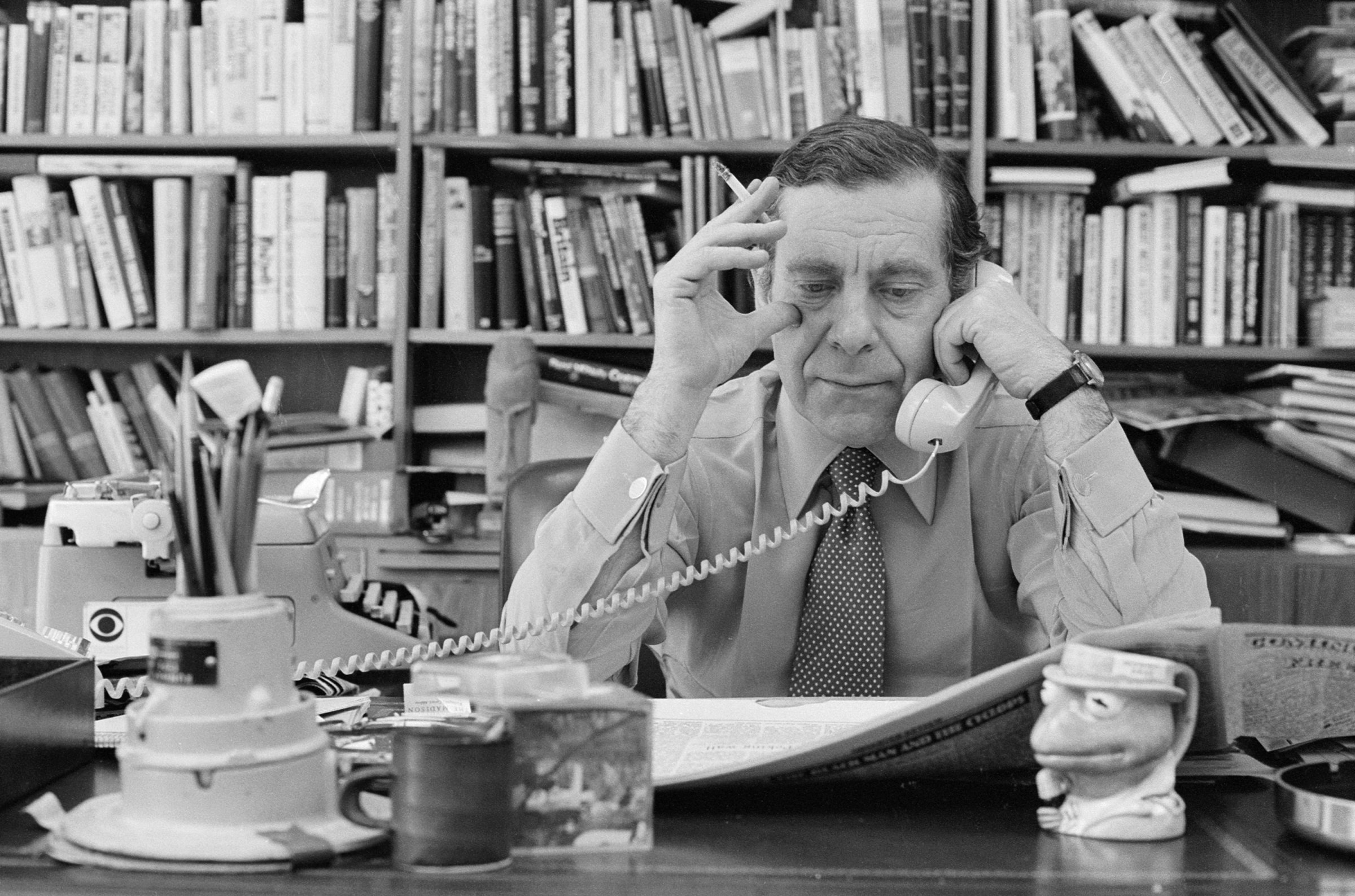
For just shy of half a century, Morley Safer was one of the most multifarious journalists on CBS’ 60 Minutes, filing nearly a thousand dispatches on a dizzying array of subjects — from race relations in the U.S. to the tango in Finland — and from all corners of the planet. Certainly he’s the most enduring — he joined as a correspondent in 1970, in the show’s third season.
He died on Thursday night at age 84. Safer’s death came mere days after his retirement from 60 Minutes, which commemorated his career last Sunday night with an hour-long biographical tribute. Much of his career has been storied, but there are several moments especially worthy of remembering:
1. Cam Ne. In 1965, after working for CBS News in London, Safer opened the organization’s bureau in Saigon amid the fervor and uncertainty of the Vietnam War. That August, he reported from the village of Cam Ne, where U.S. Marines used flamethrowers to torch civilian homes. So incendiary was the report — it was among the first to suggest that all was not well in Indochina — that President Lyndon B. Johnson called CBS and accused Safer of having “shat on the American flag.” The Canadian-born reporter later said that the Johnson Administration wanted him fired, and that there were allegations that he was a Soviet KGB agent. The broadcast is remembered today as a revolutionary journalistic feat.
2. Lenell Geter. He was a young engineer in Texas wrongfully sentenced to a life sentence in prison for the armed robbery of a Kentucky Fried Chicken restaurant. In 1983, Safer thought the story “smelled to high heaven,” and so he and the team at 60 Minutes dug into it. A week after the special aired, Geter was released from prison. He later said that Safer saved his life.
3. The art world. What is art? In 1993, Safer, an art enthusiast, decided to ask that question in an unmerciful look at an art world he deemed pretentious and mostly asinine. He began the report by describing works of art that had sold for six figures — including a vacuum cleaner and a pair of urinals — before launching into a dissection of big-name celebrity artists like Jeff Koons and Cy Twombly. Koons and Twombly made it out alive, but the art world apparently never forgave Safer. “They don’t like him for it,” Jeff Fager, 60 Minutes’ executive producer, said on Sunday’s special.
Safer says he happily stands by everything he said.
4. Anna Wintour. The editor in chief of Vogue might be best known for her reputation as an allegedly authoritarian figure, in large part because the successful novel (and then film) The Devil Wears Prada was reportedly inspired by her supposed style of newsroom leadership. But Safer didn’t seem fazed when he sat down with Wintour in 2009 — her first extensive interview on U.S. television — chatting genially with her about her persona (“If I’m such a bitch, they must be gluttons for punishment, because they’re still here,” she said of her employees) and the oversize sunglasses perennially on her face, which Wintour described as “seriously useful.”
“I can sit in a [fashion] show and f I’m bored out of my mind, nobody will notice,” she said.
5. Ruth and Andrew Madoff. Three years after Bernie Madoff was sentenced to a century and a half in prison for orchestrating the largest financial fraud in American history, his wife and son sat down with Safer for a heart-wrenchingly frank conversation about bearing witness to the crime. Ruth confessed to Safer in the 60 Minutes special that after news of the scam made headlines, she and her husband had attempted suicide by swallowing pills.
More Must-Reads From TIME
- The 100 Most Influential People of 2024
- Coco Gauff Is Playing for Herself Now
- Scenes From Pro-Palestinian Encampments Across U.S. Universities
- 6 Compliments That Land Every Time
- If You're Dating Right Now , You're Brave: Column
- The AI That Could Heal a Divided Internet
- Fallout Is a Brilliant Model for the Future of Video Game Adaptations
- Want Weekly Recs on What to Watch, Read, and More? Sign Up for Worth Your Time
Contact us at letters@time.com